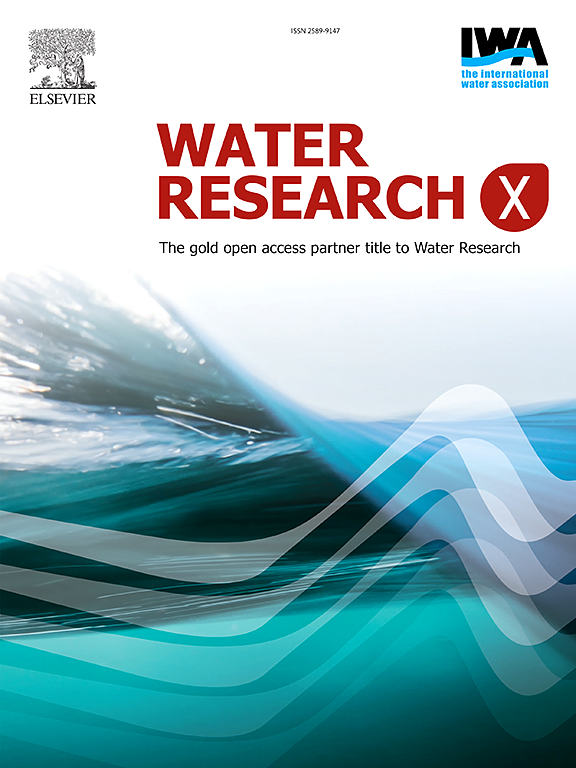Upgrading waste activated sludge into valuable biosolids via an integrated biochemical approach
IF 8.2
2区 环境科学与生态学
Q1 ENGINEERING, ENVIRONMENTAL
引用次数: 0
Abstract
Sludge management is a significant challenge for water utilities worldwide. High costs are largely driven by poor digestibility and dewaterability, while elevated concentrations of pathogens and toxic metals limit the safe and beneficial reuse of sludge. This study proposes an innovative integrated biochemical method that concurrently enhances sludge digestibility, facilitates toxic metal removal, improves dewaterability, and achieves pathogen reduction. In a laboratory-scale aerobic sludge digester processing waste-activated sludge, in-situ sludge acidification was achieved within 35–40 days, reaching a pH of approximately 2.6. This acidification was driven by the natural cultivation of acid-tolerant ammonia-oxidizing bacteria (Ca. Nitrosoglobus), which generate protons by oxidizing ammonium released from the sludge. Sludge acidification resulted in significant improvements, including volatile solids (VS) destruction (49 ± 6 %), pathogen reduction (∼4 log reduction), enhanced dewaterability (demonstrated by three methods), and toxic metal solubilization. While most toxic metals were solubilized to meet the Grade A biosolid standard (the highest biosolids standard qualified for unrestricted and safe use), copper only met the Grade B standard. To address this, a low dose of nitrite (5 mg N/L) was added to the acidified sludge (pH 2.2, adjusted with a small amount of acid) for 5 h, successfully solubilizing copper and upgrading the sludge to Grade A standards. Overall, this study demonstrates the potential of in-situ sludge acidification combined with minimal nitrite and acid addition as an efficient approach for improving multiple aspects of sludge management.

通过综合生化方法将废弃活性污泥升级为有价值的生物固体
污泥管理是全球水务公司面临的重大挑战。高成本主要是由于消化率和脱水性差,而病原体和有毒金属浓度升高限制了污泥的安全和有益再利用。本研究提出了一种创新的综合生化方法,同时提高污泥消化率,促进有毒金属的去除,提高脱水能力,实现病原体的减少。在实验室规模的好氧污泥消化池中处理废物活性污泥,在35-40天内实现了原位污泥酸化,pH值约为2.6。这种酸化是由自然培养的耐酸氨氧化细菌(Ca. Nitrosoglobus)驱动的,这些细菌通过氧化污泥中释放的铵来产生质子。污泥酸化带来了显著的改善,包括挥发性固体(VS)的破坏(49%±6%),病原体的减少(~ 4对数减少),脱水能力的增强(通过三种方法证明)和有毒金属的溶解。虽然大多数有毒金属被溶解以达到A级生物固体标准(最高生物固体标准,可以不受限制和安全使用),但铜只达到B级标准。为了解决这个问题,将低剂量的亚硝酸盐(5mg N/L)添加到酸化污泥(pH 2.2,用少量酸调节)中5小时,成功地溶解了铜,将污泥提升到a级标准。总体而言,本研究表明,原位污泥酸化结合微量亚硝酸盐和酸的添加是一种改善污泥管理多个方面的有效方法。
本文章由计算机程序翻译,如有差异,请以英文原文为准。
求助全文
约1分钟内获得全文
求助全文
来源期刊

Water Research X
Environmental Science-Water Science and Technology
CiteScore
12.30
自引率
1.30%
发文量
19
期刊介绍:
Water Research X is a sister journal of Water Research, which follows a Gold Open Access model. It focuses on publishing concise, letter-style research papers, visionary perspectives and editorials, as well as mini-reviews on emerging topics. The Journal invites contributions from researchers worldwide on various aspects of the science and technology related to the human impact on the water cycle, water quality, and its global management.
 求助内容:
求助内容: 应助结果提醒方式:
应助结果提醒方式:


